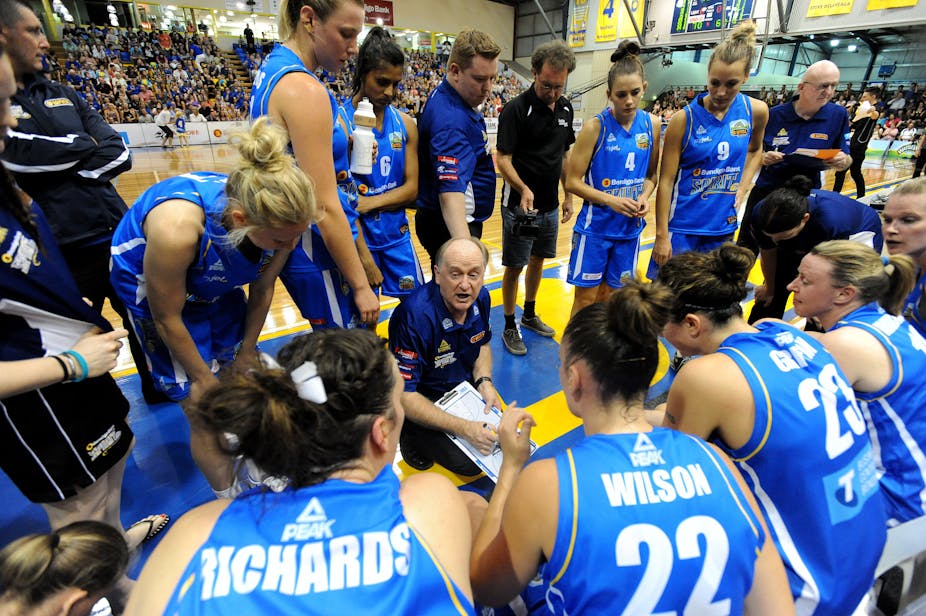Recently, it was reported that the AFL, the Australian Sports Commission and the Richmond Football Club have jointly funded research to “investigate the real and perceived blocks to women reaching the highest positions in sport”.
Richmond CEO Brendon Gale acknowledged that the club’s support for this study stemmed from a desire to increase the talent pool from which future candidates for managerial positions can be drawn:
At the higher levels of our football club, and speaking more generally about the industry, women are under-represented. We’ve all got hunches and suspicions; this is about understanding why.
Richmond – and Gale in particular – should be commended for valuing the skills and insight that talented women could bring to their management team. And new AFL CEO Gillon McLachlan has already indicated that creating a more female-friendly footy industry is high on his list of priorities:
We need greater diversity in our industry generally. I think to do that it has to start at the top, and I’m committed to a more diverse-looking industry and a more diverse-looking AFL.
However, the AFL research will likely produce many of the same findings as the existing literature on barriers for female participation in Australian sport management.
The common denominator in much of this research is that men and women are positioned differently by the dominant discourses and deep-seated assumptions surrounding management in different industries.
In an illuminating contrast to the Richmond research project, former VFL assistant coach Peta Searle has given up on her seven-year quest to become part of the coaching panel of an AFL club.
Searle has returned to physical education teaching at a secondary school. She was unable to ask her family to survive on the meagre wages offered to VFL assistant coaches while waiting for an AFL club to break from tradition and give her an opportunity as an assistant coach ahead of a recently retired AFL player.
Deep-seated assumptions
My colleague Chris Hallinan and I highlighted how these assumptions manifest in sports management and coaching in research into why the Victorian Junior Basketball Championships – an amateur competition for both girls and boys – remained male-controlled.
Elite junior basketball in Victoria offers a set of competitions for boys and girls that, in many ways, approaches the ideal of gender equity. Junior female players and teams have equal access to the various courts, referees, organisational supports and player development programs as junior male players. On most Friday nights in Melbourne in 2014, about 4000 junior women play in the Victorian Championships.

However, there is a dominance of male coaches in the competition. This is true both overall and exaggerated in a breakdown of the ability grades. That is, males are overrepresented and such overrepresentation is magnified in the more elite competitions.
Beliefs within basketball coaching about the “ideal” posture, tone and volume of voice limit the type of positions that females currently hold within the sport. These beliefs then produce positions for men in senior basketball coaching and management that are more easily converted into economic and cultural capital than those available to women.
One example of the deep-seated assumptions behind this structure is that many clubs in the Victorian Championships felt it was necessary to provide a nurturing and caring coach for junior women basketballers who were just starting out in the competition. In most of these situations, the coach had to be female.
Several of the basketball clubs that we observed had such a coach: a female who had devoted years to the most junior years and had never aspired to progress to more prestigious levels of coaching. Coaching under-12 female basketballers became a self-imposed type of “velvet ghetto” for experienced female coaches with skills for coaching roles in much higher levels of competition.
A way forward
Other overseas research revealed that young female soccer players are trained to consent to certain discourses about coaching. These promote the idea of coaching as a masculine profession, where the coach should embody masculine values.
This model of coaching was found to foster a belief among young female players that they should not aspire to roles in coaching and management. And this is one small example where a historically preferred leadership style results in unequal opportunities and outcomes for men and women in sport.
The good news for females hoping to appropriate positions in sport coaching and management is that this research went on to find that the adult women surveyed as part of it – playing soccer in the US, Germany and Norway – preferred the coaching style of female coaches.
Two important themes emerged from their research. Firstly, female players who had embraced the “think coach, think male” philosophy and were originally negative towards the presence of a female coach changed this perception with experience of a female coach.
These female athletes also communicated a preference for an understanding and caring style of communication, which did not fit with the dominant discourse about coaching.
To address this in the AFL, and potentially open up the talent pool for management positions – and maybe even coaching positions – to include women, the starting point would be to break down the long-standing belief that to understand the game fully, you must have played it at the highest level.
The dismantling of this belief is slowly occurring in some of the professional leagues in America and Europe, where a growing number of coaches and commentators have not played the game at the highest level.
The importance of those in leadership supporting this cultural change should also not be underestimated. Nor should their support be in any way controversial. Recent history is on their side with many women successfully occupying positions of authority in the AFL and contributing to changing attitudes towards women in football.

